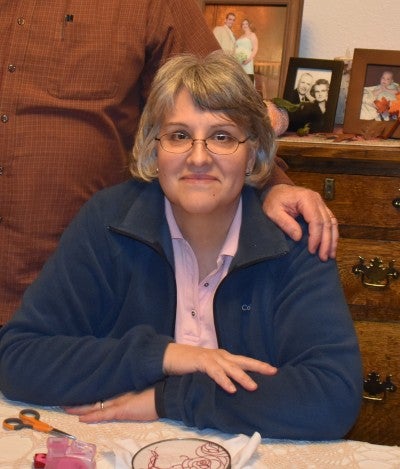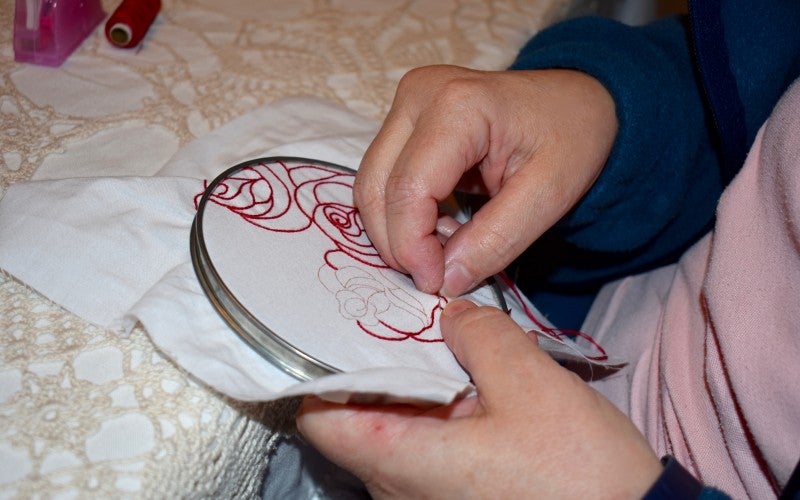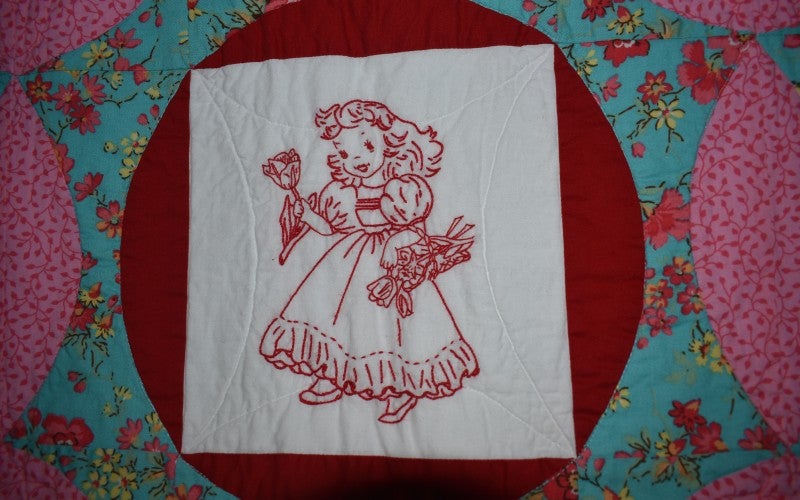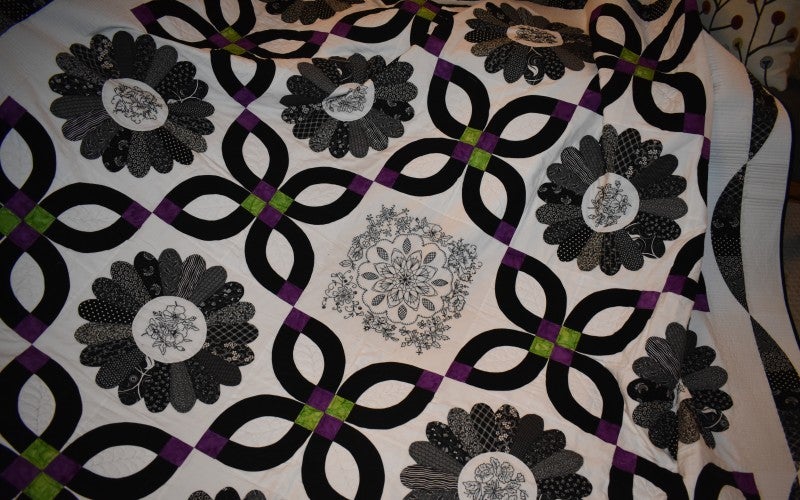Jean Gordon (Aloha) is a third-generation quilter and embroiderer. A member of the Westside Quilters Guild and the Metropolitan Patchwork Society, Gordon is well known for the way she incorporates Red Work embroidery into her quilts.
Bio
Jean Gordon is a third-generation quilter. She and her 11 siblings would tie quilts together in preparation for their mother’s actual hand-quilting. All of her sisters quilt. "It's just what we do," she explained. Jean Gordon was eight when her mother and grandmother first introduced her to embroidery and taught her the basics: French knot, lazy daisy, stem stitches, back stitch, fly stitch. In college, she made quilts and clothes and embroidered tablecloths. When her children were young, she sewed many of their clothes and started her own sewing business, making clothes, prom and wedding dresses, and doing alterations. Gordon also taught her daughter to embroider and quilt, which they enjoy doing together today. Now her daughter sews and quilts all the time. As Gordon says, "it must be hereditary—it's in our blood." A member of the Westside Quilters Guild and the Metropolitan Patchwork Society, Gordon is well known for her expertise in redwork, a traditional embroidery technique that uses only red thread on white or natural-colored fabric. Gordon creates her own designs for herself and her students; she uses small and neat stem or outline stitches to create flower and nature designs that also feature split, satin, and French knots for special features. Although Gordon has taught embroidery classes at Sharon’s Attic since 2008, she herself prefers red work for the therapeutic value of the slow and steady stitching and the portability of the craft. It requires only a needle, an embroidery hoop, some fabric, and some embroidery floss. In 2016, Jean started giving an appliqué class to teach other quilters how to needle-turn by hand and with machine. Instead of hemming a fabric shape, one uses a needle to turn under the raw edges of a fabric shape and sew (appliqué) it to the main quilt or item. On an average day, Gordon usually stitches for an hour when she gets home, makes dinner, and then stitches for another hour before bed. Some days when she's off, she will stitch or quilt all day long. She never runs out of ideas or inspiration.





